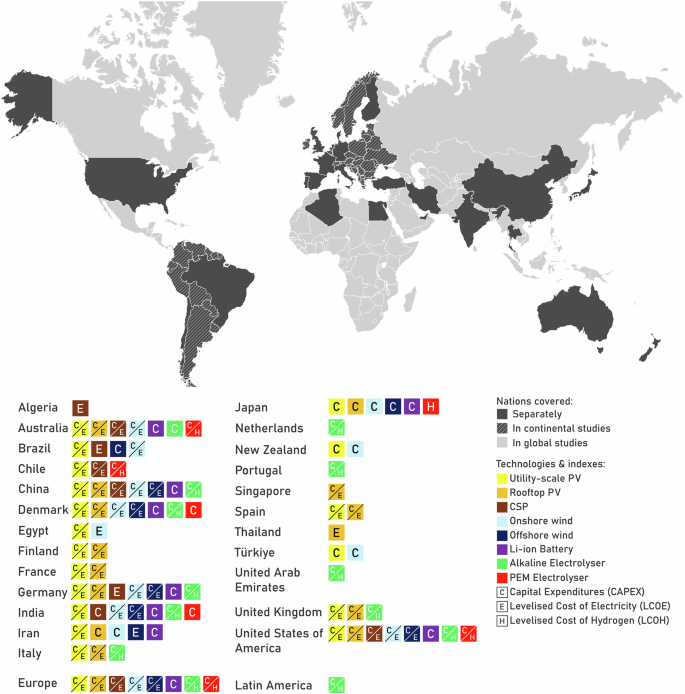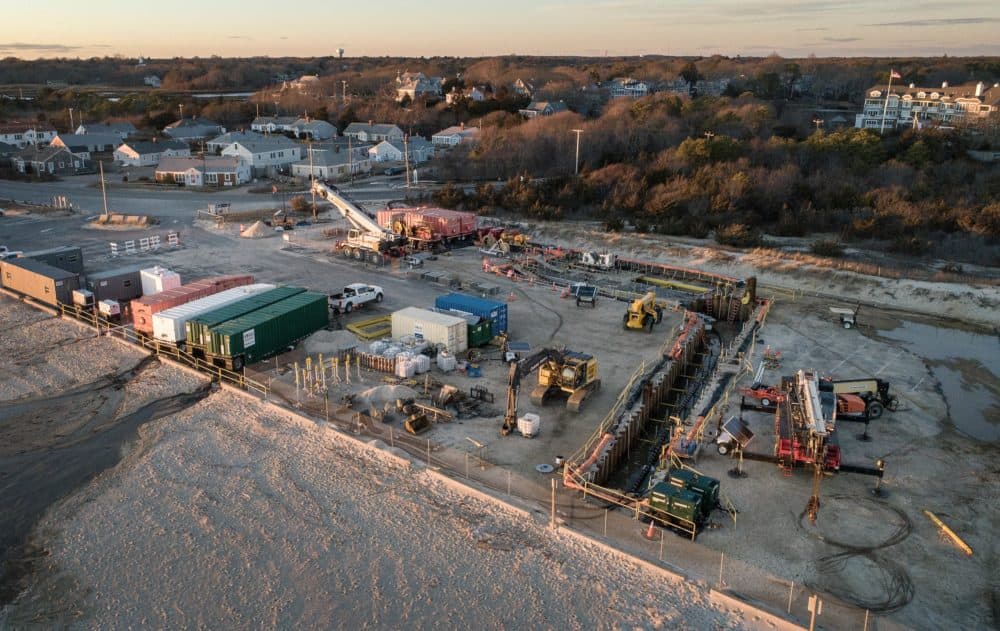Report on Clean Energy Technology Cost Projections for Sustainable Development
1.0 Executive Summary
This report details the compilation and standardization of a comprehensive dataset of cost projections for key clean energy technologies, designed to support the global energy transition and the achievement of the United Nations Sustainable Development Goals (SDGs). By harmonizing data from over 110 regional and global studies, this work provides a critical resource for modeling, policy-making, and investment decisions. The dataset focuses on technologies pivotal for achieving SDG 7 (Affordable and Clean Energy) and SDG 13 (Climate Action), offering granular cost projections through 2050. This resource enables robust techno-economic evaluations and energy system modeling, thereby facilitating the development of sustainable infrastructure (SDG 9) and fostering pathways to global decarbonization.
2.0 Introduction and Alignment with Sustainable Development Goals
Accurate energy technology cost projections are fundamental for navigating the transition to a sustainable energy future. This work addresses the need for up-to-date, organized, and granular data to inform energy system models that guide policy and investment. Inaccurate or pessimistic cost projections can misdirect infrastructure planning and impede progress toward climate goals. This initiative directly supports several SDGs:
- SDG 7 (Affordable and Clean Energy): By providing reliable cost data for solar, wind, and storage technologies, the dataset helps identify the most cost-effective pathways to ensure access to affordable, reliable, and modern energy.
- SDG 13 (Climate Action): The dataset is an essential tool for modeling decarbonization scenarios and designing effective climate change mitigation strategies.
- SDG 9 (Industry, Innovation, and Infrastructure): It supports strategic planning for sustainable and resilient energy infrastructure, including grid modernization and the development of a green hydrogen economy.
The compiled database provides a harmonized set of cost projections, focusing on studies published since 2020 to reflect current market dynamics and policy contexts, thereby enhancing the reliability of models aimed at achieving these global goals.
3.0 Scope of the Dataset
3.1 Technology Coverage
The dataset includes technologies critical for deep decarbonization and the integration of variable renewables, directly supporting SDG 7 and SDG 9. The selection prioritizes technologies with significant global deployment and available comparative data.
- Solar Photovoltaics (PV): Utility-scale (>1 MW) and rooftop (5–50 kW) systems.
- Wind Power: Onshore and offshore grid-scale installations.
- Energy Storage: Grid-scale stationary Li-ion batteries.
- Concentrated Solar Thermal Power (CSP): Plants with integrated thermal storage for dispatchable renewable power.
- Hydrogen Production: Large-scale Alkaline (ALK) and Proton Exchange Membrane (PEM) electrolysers (>1 MW).
Technologies such as geothermal, bio-energy, and nuclear power were excluded due to limited availability of comparable, forward-looking cost data and high site-specificity, which complicates standardized analysis.
3.2 Cost Indicators and Scope
Two primary cost indicators are provided to facilitate comprehensive economic analysis:
- Capital Expenditures (CAPEX): Investment costs, typically expressed in USD/kW.
- Levelised Cost of Energy: Levelised Cost of Electricity (LCOE) or Hydrogen (LCOH), expressed in USD/MWh or USD/kg.
The data covers national, continental, and global scales with annual granularity through 2050, allowing for detailed spatio-temporal analysis.
4.0 Methodology for Data Compilation and Standardization
A systematic process was employed to collect, filter, and harmonize data from diverse sources, ensuring consistency and comparability for robust modeling in line with SDG objectives.
4.1 Data Collection and Filtering
- Source Identification: A keyword-based search was conducted across academic repositories (Web of Science, Scopus), governmental and institutional websites, and reports from industry and NGOs.
- Source Classification: Sources were categorized as academic papers, governmental reports, commercial white papers, or NGO outlooks.
- Filtering Criteria: Over 120 initial sources were filtered to include only those published after 2020 (with exceptions for key annual reports like NREL ATB and IEA WEO) and containing at least one set of projection modeling results. This resulted in 114 suitable reports.
- Data Extraction: Relevant data points for CAPEX and LCOE/H were manually extracted. Assumptions such as discount rates and technology lifetimes were noted but excluded from the final dataset.
4.2 Data Processing and Harmonization
To create a coherent dataset, the following processing steps were applied:
- Geographical Averaging: Sub-national projections (e.g., different solar zones within a country) were averaged to create single country-level data points, aligning with the needs of national and global energy system models.
- Standardization of Components: Inconsistent metrics were harmonized. For example, older NREL PV CAPEX data (USD/kWdc) were converted to USD/kWac using a standard correction factor to ensure comparability with recent data.
- Gap Filling: Where only minimum and maximum cost projections were provided, an average value was calculated to ensure consistent data points across all studies.
- Currency and Inflation Adjustment: All cost figures were standardized to 2024 U.S. dollars using the Consumer Price Index (CPI) and annual average exchange rates.
5.0 Data Records and Usage
5.1 Data Structure
The final dataset is available in two structured Excel workbooks. The structure is designed for ease of use in techno-economic modeling and policy analysis.
- The primary workbook contains 21 sheets, with separate sheets for each technology’s CAPEX and LCOE/H projections.
- Dedicated sheets compile data from major institutional sources (NREL, IEA, CSIRO, Fraunhofer ISE, ETIP PV).
- Columns are organized by study identifier, region, and scenario (e.g., minimum, mean, maximum, or institution-specific scenarios like IEA’s “Net Zero Emissions”).
- A second, machine-friendly workbook is provided for streamlined use in coding environments.
5.2 Applications for Sustainable Development
This dataset is a versatile tool for stakeholders working to advance the SDGs:
- Techno-economic Scenario Modelling: Calibrate future energy scenarios for national energy strategies and net-zero roadmaps, directly supporting SDG 7 and SDG 13.
- Investment and Policy Prioritisation: Identify when and where clean technologies become cost-competitive to guide public and private investment and design effective policy incentives.
- Risk and Uncertainty Assessment: Use the range of cost projections (min, mean, max) to conduct sensitivity analyses and support robust decision-making.
- Technology Benchmarking: Compare national or regional cost assumptions against global trends to ensure alignment with international progress toward clean energy goals.
- Cross-sectoral Integration Analysis: Model the integration of energy storage and renewable hydrogen to support deep decarbonization of transport and industry, contributing to SDG 9 and SDG 11.
6.0 Technical Validation
The validity of the compiled database was ensured through a multi-step verification process:
- Source Credibility: Data was sourced from peer-reviewed journals, reputable institutions (e.g., IEA, NREL), and widely cited industry reports (e.g., BloombergNEF).
- Cross-Verification: Projections for specific regions (e.g., Europe, Asia) were compared across multiple independent studies. A high degree of consistency was observed, providing confidence in the data’s reliability.
- Benchmarking Against IEA Data: For regions with fewer dedicated studies, projections were compared against the comprehensive cost ranges provided by the IEA, which are derived from extensive analysis. Nearly all compiled projections fell within the IEA’s established low-cost (China) to high-cost (U.S.) range, further validating their plausibility.
7.0 Conclusion
This harmonized dataset of clean energy technology cost projections serves as a vital resource for accelerating the global energy transition. By providing standardized, granular, and up-to-date information, it empowers policymakers, researchers, and investors to make informed decisions that align with the objectives of SDG 7 (Affordable and Clean Energy), SDG 13 (Climate Action), and SDG 9 (Industry, Innovation, and Infrastructure). The comprehensive coverage and robust validation of this dataset will enhance the accuracy of energy system models and support the development of effective, evidence-based strategies for a sustainable and decarbonized future.
Analysis of Sustainable Development Goals (SDGs) in the Article
1. Which SDGs are addressed or connected to the issues highlighted in the article?
The article’s focus on compiling and standardizing cost projection data for clean energy technologies directly connects to several Sustainable Development Goals (SDGs). The primary purpose of this work is to support the global energy transition, guide policy and investment, and facilitate decarbonization pathways.
-
SDG 7: Affordable and Clean Energy
This is the most central SDG addressed. The article is entirely focused on “major clean energy technologies” such as solar photovoltaics, wind power, batteries, and green hydrogen electrolysers. By providing reliable cost projections (CAPEX and LCOE/LCOH), the dataset aims to make the transition to clean energy more predictable and economically viable, thus supporting the goal of ensuring access to affordable, reliable, sustainable, and modern energy for all.
-
SDG 13: Climate Action
The article explicitly states that its dataset supports “decarbonisation pathways” and helps in the achievement of “climate goals.” The transition to the clean energy technologies discussed is a primary strategy for mitigating climate change. Accurate cost data is critical for creating effective policies and models that aim to reduce greenhouse gas emissions and combat climate change, directly aligning with the call for urgent action in SDG 13.
-
SDG 9: Industry, Innovation, and Infrastructure
The research supports building resilient and sustainable infrastructure. The article highlights that its data is crucial for “energy system modelling” and “infrastructure planning.” By providing granular cost data, it enables better planning for the integration of innovative clean energy technologies into national and global energy systems, fostering sustainable industrialization and innovation.
-
SDG 17: Partnerships for the Goals
The methodology of the study embodies the spirit of SDG 17. The authors “compile and standardise a broad dataset from over 110 existing regional and global studies,” drawing from academic, governmental, industrial, and NGO sources. This act of harmonizing and sharing knowledge from a wide range of stakeholders is a form of global partnership aimed at mobilizing resources and expertise to achieve sustainable development.
2. What specific targets under those SDGs can be identified based on the article’s content?
Based on the article’s content, several specific targets under the identified SDGs can be pinpointed:
-
SDG 7: Affordable and Clean Energy
-
Target 7.2: By 2030, increase substantially the share of renewable energy in the global energy mix.
Explanation: The article directly supports this target by providing essential cost data for key renewable technologies like “utility-scale and rooftop photovoltaics, onshore and offshore wind power,” which are fundamental to increasing the renewable energy share. -
Target 7.a: By 2030, enhance international cooperation to facilitate access to clean energy research and technology… and promote investment in energy infrastructure and clean energy technology.
Explanation: The dataset itself is a tool for international cooperation, as it compiles global data to “guide policy and investment decisions.” It facilitates investment by providing standardized cost projections that are crucial for “investment planning” and “risk and uncertainty assessment.”
-
Target 7.2: By 2030, increase substantially the share of renewable energy in the global energy mix.
-
SDG 13: Climate Action
-
Target 13.2: Integrate climate change measures into national policies, strategies and planning.
Explanation: The article states that the dataset is intended to support “policy design” and the creation of “national energy strategies, and net-zero roadmaps.” This provides policymakers with the evidence base needed to integrate climate action into their planning.
-
Target 13.2: Integrate climate change measures into national policies, strategies and planning.
-
SDG 9: Industry, Innovation, and Infrastructure
-
Target 9.4: By 2030, upgrade infrastructure and retrofit industries to make them sustainable…
Explanation: The cost projections for clean energy technologies are essential for planning the upgrade of energy infrastructure. The data helps in “selecting the most efficient and cost-effective technologies” to ensure future energy systems are sustainable. -
Target 9.5: Enhance scientific research, upgrade the technological capabilities of industrial sectors in all countries…
Explanation: The work contributes to scientific research by providing a “structured harmonisation” of data suitable for “techno-economic evaluation and robust energy system modelling.” This enhances the capability of researchers and modellers to forecast and plan for technological advancements.
-
Target 9.4: By 2030, upgrade infrastructure and retrofit industries to make them sustainable…
-
SDG 17: Partnerships for the Goals
-
Target 17.16: Enhance the global partnership for sustainable development, complemented by multi-stakeholder partnerships that mobilize and share knowledge, expertise, technology and financial resources…
Explanation: The article’s methodology, which involves compiling data from “over 110 existing regional and global studies” from “peer-reviewed and institutional sources,” is a direct example of a partnership that mobilizes and shares knowledge to support the global energy transition.
-
Target 17.16: Enhance the global partnership for sustainable development, complemented by multi-stakeholder partnerships that mobilize and share knowledge, expertise, technology and financial resources…
3. Are there any indicators mentioned or implied in the article that can be used to measure progress towards the identified targets?
Yes, the article explicitly mentions and is built around specific quantitative indicators that can be used to measure progress towards the identified targets. These indicators are the core of the dataset presented.
-
Capital Expenditures (CAPEX)
Explanation: The article identifies CAPEX as one of the “two main cost indicators.” It is defined as the investment cost for clean energy technologies, typically measured in USD per kilowatt (USD/kW). This indicator is crucial for measuring progress towards Target 7.a (promoting investment) and Target 9.4 (upgrading infrastructure), as declining CAPEX signals that technologies are becoming more affordable to build and deploy on a large scale.
-
Levelised Cost of Electricity (LCOE)
Explanation: LCOE is the second primary indicator mentioned, representing the average net present cost of electricity generation for a plant over its lifetime. It is measured in USD per megawatt-hour (USD/MWh). This indicator directly relates to the “affordable” aspect of SDG 7 and is a key metric for comparing the cost-competitiveness of different energy sources. A falling LCOE for renewables is a direct measure of progress towards Target 7.2 (increasing renewable energy share).
-
Levelised Cost of Hydrogen (LCOH)
Explanation: Similar to LCOE, the article specifies LCOH as a key indicator for “large-scale alkaline and PEM electrolysers.” This measures the cost of producing clean hydrogen, which the article notes has an “emerging role as a seasonal power balancing option and energy vector to decarbonise hard-to-abate sectors.” This indicator is vital for tracking the economic feasibility of hydrogen as a tool for deep decarbonization, contributing to SDG 13 (Climate Action).
These indicators—CAPEX, LCOE, and LCOH—are not just mentioned; they form the foundation of the entire dataset. The article’s contribution is the “structured harmonisation, metadata processing, and comprehensive coverage” of these specific metrics to enable “techno-economic evaluation and robust energy system modelling,” which are essential activities for planning and tracking the energy transition.
4. Table of SDGs, Targets, and Indicators
| SDGs | Targets | Indicators |
|---|---|---|
| SDG 7: Affordable and Clean Energy |
|
|
| SDG 13: Climate Action |
|
|
| SDG 9: Industry, Innovation, and Infrastructure |
|
|
| SDG 17: Partnerships for the Goals |
|
|
Source: nature.com







